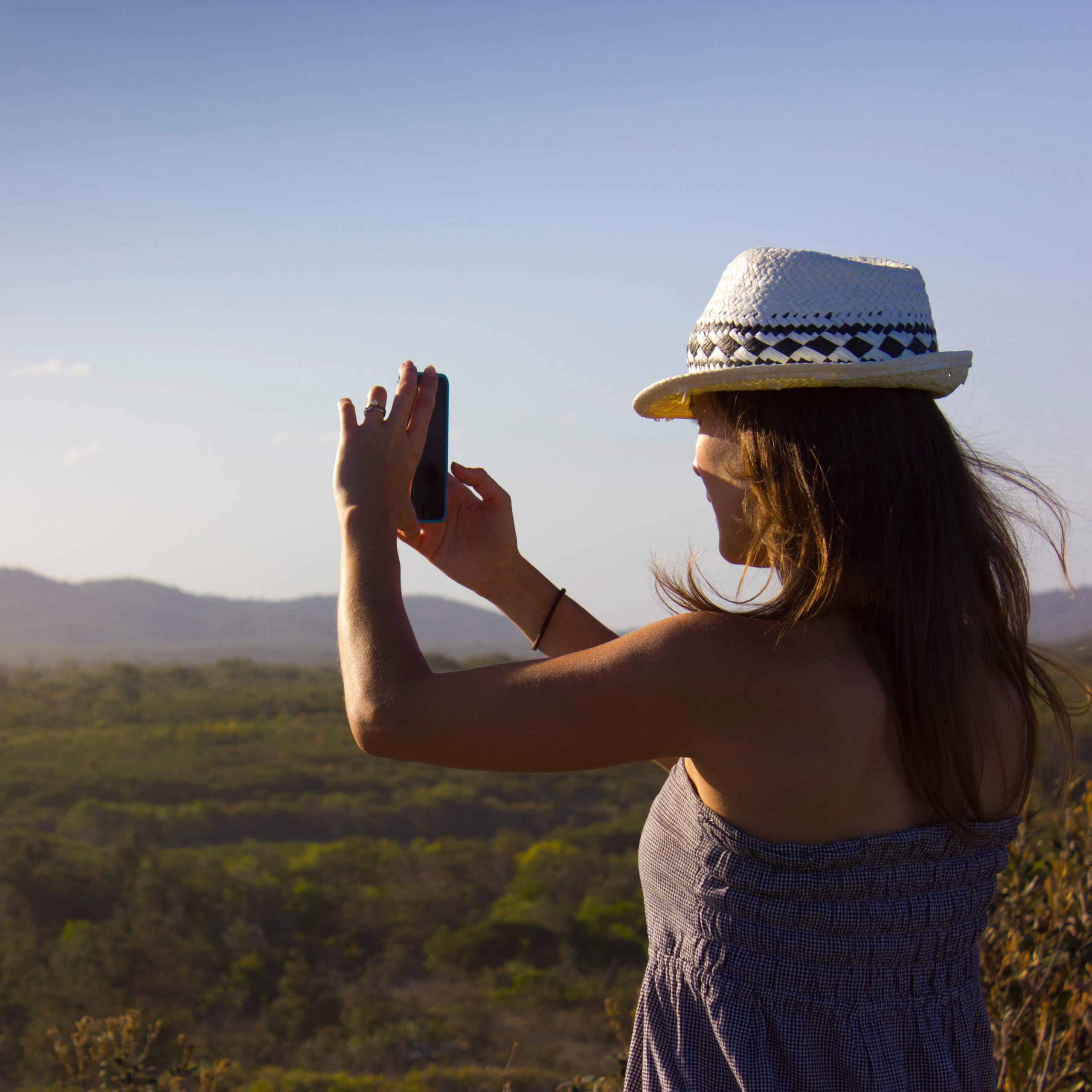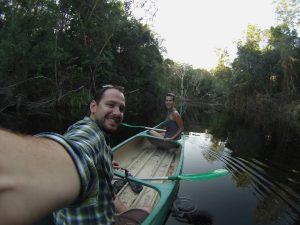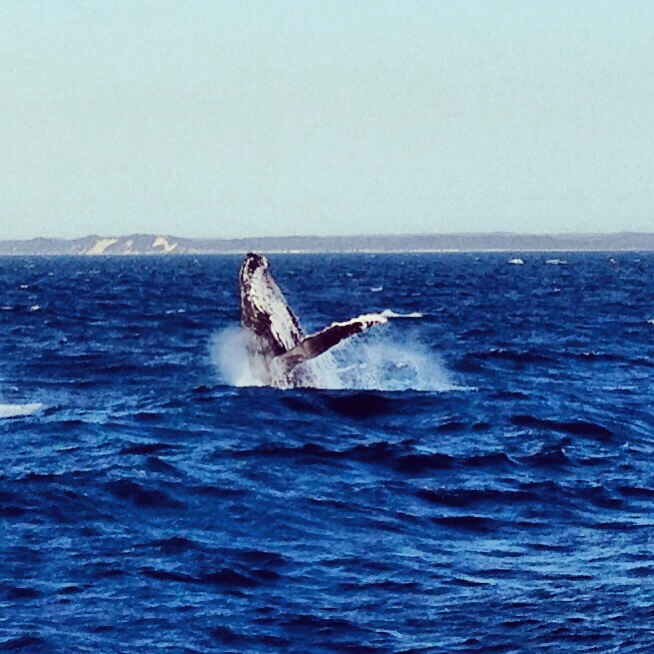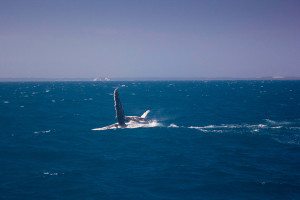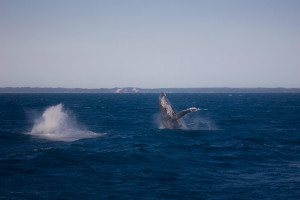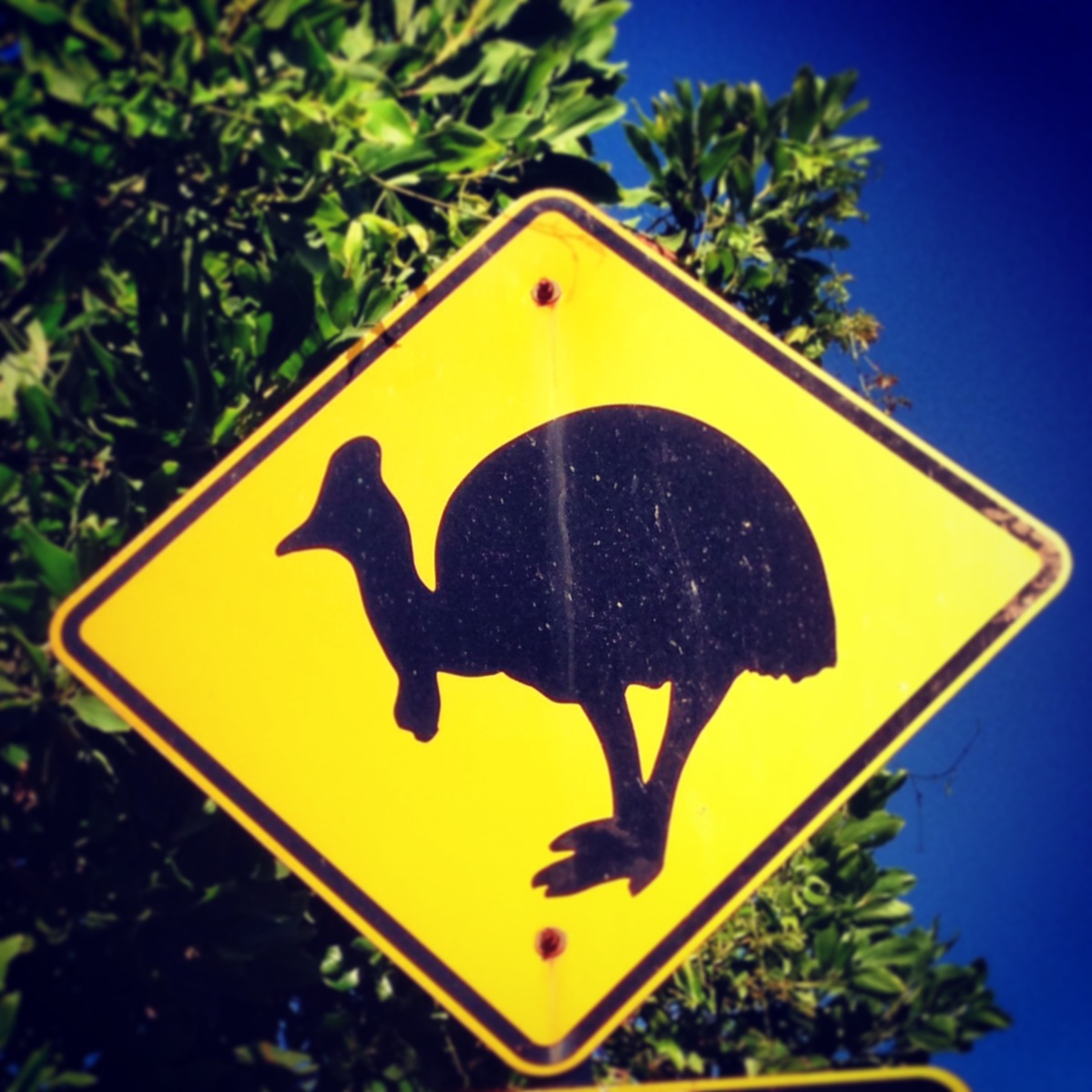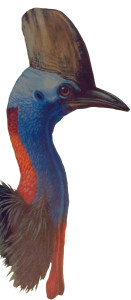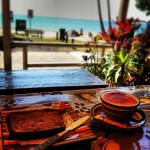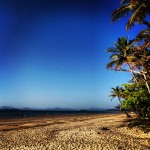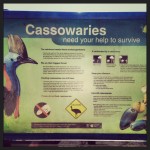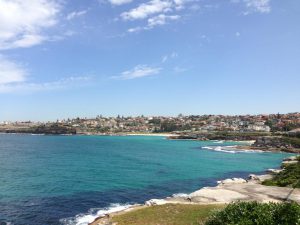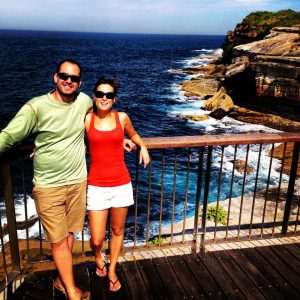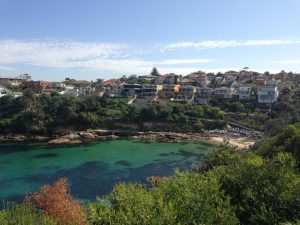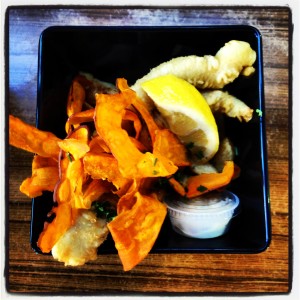Updated in March 2025
Travelling the east coast of Australia in a campervan is the perfect way to get to know this vast and varied part of the country and an experience that I can’t recommend enough. The freedom to go where you want to go, when you want to go, to stop somewhere on a whim, change your plans and sleep where you want is a wonderful feeling! This is my guide to planning a road trip on the east coast of Australia…
Campervan hire:
Our three-week adventure started in Sydney and ended in Cairns, covering a total distance of 2629 kilometres. We landed in Sydney, jumped in a taxi to Jucy rentals and picked up what was to be our home for the next three weeks, a green and purple campervan. This little beauty looked like it had been well-loved which made me like it even more! We got given a quick briefing and then handed the keys. Our Jucy Van was compact but had everything we needed for our three-week journey. Bedding, pillows and towels were provided with the van along with pots and pans, crockery, cutlery and a map. The van had a small kitchen area at the back, which consisted of a camping gas stove, a cool box (powered by a leisure battery) and a sink. It also had a DVD player, but with so much exploring to do we didn’t get round to using it. Awesome campervan and an awesome company!
Things I took with me on the trip:
- When planning for a road trip on the east coast of Australia, my first tip would be to pack fairly lightly as living in a van means you have limited space.
- Guide books: Lonely Planet East Coast Australia and Cool Camping Australia – East Coast – I don’t know what we would have done without these two books. We found places we may not otherwise have visited and they really helped us out especially at the beginning of our trip when everything felt a little bit daunting.
- Driving licence: Don’t forget this! Check out Austroads for more information on driving in Australia with an overseas licence.
- LED lights and torch: These were much needed as we stayed in some very remote campsites which were pitch black at night.
- Keypod: We use one when we surf in the UK and I thought it would be perfect for Australia. It’s a small box, big enough to fit your car key in with a combination lock and padlock on top. It can be attached to the underneath of your vehicle and is perfect if you want to go for a swim or surf and don’t want to leave valuables and car keys on the beach.
- Washing tablets: Although we could have bought these out in Oz I decided it was one less thing to spend our pennies on once we were there.
- Resealable bags: Handy to store food in and to stop any beasties or bugs finding it!
- Tea bags and sugar: Again something we could have bought in Australia but I just thought I would be prepared, and there’s nothing like a decent cuppa in the morning!
- Anti – bacterial wipes: To clean down food prep areas in the van once we picked it up. You don’t know whose grubby paws have been on it before you! (Although the rental company did a very thorough clean it was just something that made me feel better!) They are also perfect for cleaning up after cooking.
- Mobile phone and Wi-Fi Dongle: We were very lucky as our lovely friends Olivia and Jamie who we stayed with in Sydney lent us these – great for calling campsites in advance and Google mapping if you don’t have data to use abroad included in your phone contract.
- We bought a USB charger to go into the cigarette lighter when we got to Australia. This proved priceless for charging our phones and camera batteries on the road.
- I’m a big flip-flops wearer but I was so pleased I packed a pair of converse ‘just in case’ I needed them. They came in very handy for bush camping. When it gets dark you never know what creepy crawlies are wondering around! So I would definitely recommend packing some closed-toe footwear.
- We took fairy lights and bought candles when we were out there, it added extra light to our camp and also made it look nice.
Sleeping:
National Park campsites:
National park campsites are the way forward for cheaper camping and for going back to basics. My advice is don’t be scared of long drop toilets and having no showers! I overcame this and experiencing these beautiful places, which can be off the beaten track and often with hardly anyone else around is awesome. It felt to us like ‘real’ camping. One tip my friend Liv gave me was to check under long drop toilet seats for spiders before you sit down! This was a great bit of advice, especially when you consider that most of the wildlife we came across were discovered in the long drop area! Liv did well at practicing her own advice….One night as we sat around the campfire in the Blue Mountains we heard screams coming from the dunny – she had found a nasty looking spider under the lid!
You need to take your own water for most national park campsites and also need to pre book, although Black Rocks campground (one of our favourite spots) in Bundjalung National Park had signposts with a phone number to book upon arrival. Lots of these campgrounds can be found along very bumpy and long unsealed roads, but this adds to the fun!
One night we parked up and slept on the side of a road, funnily enough opposite a campsite! It was quite a nice spot on the harbour front at Hervey Bay; we chose it as the car park just in front of our parking spot had a half decent public toilet that wasn’t locked at night. We had been on a whale watching trip which meant we didn’t get back until early evening and we had a lot of driving planned for the next day and got up at around 5am. Due to this we decided there was no point in paying for a pitch. Lots of car parks have no camping signs clearly displayed so they are of course a no go. I am not entirely sure as to whether we were allowed to camp on the roadside, but hey sometimes you’ve got to be a rebel and just live on the edge!
Head here for campsites in New South Wales: NSW National Parks and Wildlife Service.
Private campsites:
More expensive campsites were fantastic after a few days of staying in a national park or roadside camping where showers are non-existent. So to pay for a campsite with showers, flushing toilets and even a laundry room was a small slice of luxury! Most private campsites we stayed at had camp kitchens that were really well equipped with gas barbeques, fridges, ovens, sometimes microwaves, washing up facilities and plug sockets for charging electronics. Some even had free Wi-Fi, which was a big bonus.
For more information I’ve written a guide with all my favourite campsites to help with planning a road trip on the East coast of Australia: Cool Campsites on the East Coast of Australia.
The drive:
Driving the east coast is such a great way to see experience all the countryside and its differences as you head further up or down the country. The climate changed quite a lot from Sydney where there was a bit of a chill in the air to Cairns with its humid and very hot rainforest feel. I got bitten by mosquitoes further up the coast too. The temperature of the water also felt warmer as we moved further up the country.
On the drive we passed over hundreds and hundreds of creeks, we also passed sugar cane fields, plantations, rainforest, and ocean. It was interesting to drive through so many different towns like Rockhampton, with its quaint Victorian buildings making it look like it had stood still in time. Within the sugar cane fields were train lines, I loved watching the cane trains pass, transporting sugar cane to the plantations. There were also lots of banana farms up near Cairns and we also witnessed a few wild fires in this area; they were pretty scary looking.
There are plenty of opportunities to deviate from the main highway as sometimes the long straight road can get boring. All the way along there were brown tourist signs indicating an alternative route through places of interest and how many kilometers it covered before bringing you back onto the highway. We did this a few times; my favourite was the drive through the Glass House Mountains. The scenery was just incredible with bright red soil and the mountains looming high above the otherwise flat landscape. We stopped off at a great viewpoint for lunch and took photos; it was a lovely scenic diversion.
One thing to know about when driving in Australia is toll roads. These can be avoided but we ended up going through some in Sydney and then in Brisbane. They don’t cost very much but you need to make sure you go online or phone up to pay the charges. For NSW I used this website: Myrta and for QLD: Linkdt. Phone numbers and websites are signposted as you go on the toll roads and you pay the charges by giving your car registration number along with the date and times you would have been on the toll roads. It is then automatically deducted from your credit or debit card, easy!
Although it is quite an obvious thing to say I would definitely recommend keeping an eye on your fuel as sometimes fuel stations were very few and far between. We often drove for an hour or two without seeing one. We tried to make sure that our fuel gauge didn’t drop below a quarter, that way we felt safe. Something else I should mention is that the Aussies are pretty strict on speed limits, so make sure you stick to them.
Rest stops:
We experienced a mixture of good and bad rest stops while on the road. Many with the words ‘Stop, Revive, Survive’ were brilliant, with toilets, gas barbeques and picnic benches sheltered from the sun. Some even provided free tea and coffee. Although, nice service stops turned into sparse truck stops with awful long drops on the Bruce Highway, north of Brisbane. So be prepared for some horrendous dunnys; hold your nose and don’t look down!
Two refreshment stops that stood out for me were Frosty Mango, serving, you guessed it all things mango. This was recommended in the Lonely Planet Guide I mentioned earlier. We bought a mango smoothie for the road, it was so good! Tooloombah Creek Roadhhouse an hour north of Rockhampton was also a great little stop off. We were greeted by a lovely lady who fueled up the van and told us a joke at the same time… “What happened to the beans that were travelling in Australia?… They ended up in Cairns!”… It made me laugh anyway! After a chat with this lovely lady we purchased coffee, two slices of her delicious homemade cake and continued on our journey. I really loved chatting to locals, who more often than not were very welcoming. Some also passed on useful information to us such as a fuel attendant in Byron Bay. I told him we were heading to Mission Beach at some point in our journey, he told us how nice it was and recommended a great campsite. A bit of local knowledge sometimes goes a long way.
I hope this has given you a bit of an insight into planning a road trip on the east coast of Australia. If you have any of your own tips please feel free to add them in the comments below; I’d love to hear them. Writing this post has made me want to go back to the land of down under right now! With 1633 miles of the east cast of Australia explored I can’t wait to share the rest of my adventures with you all…
For more on Australia take a look at my other posts:
Three weeks in three and a half minutes

